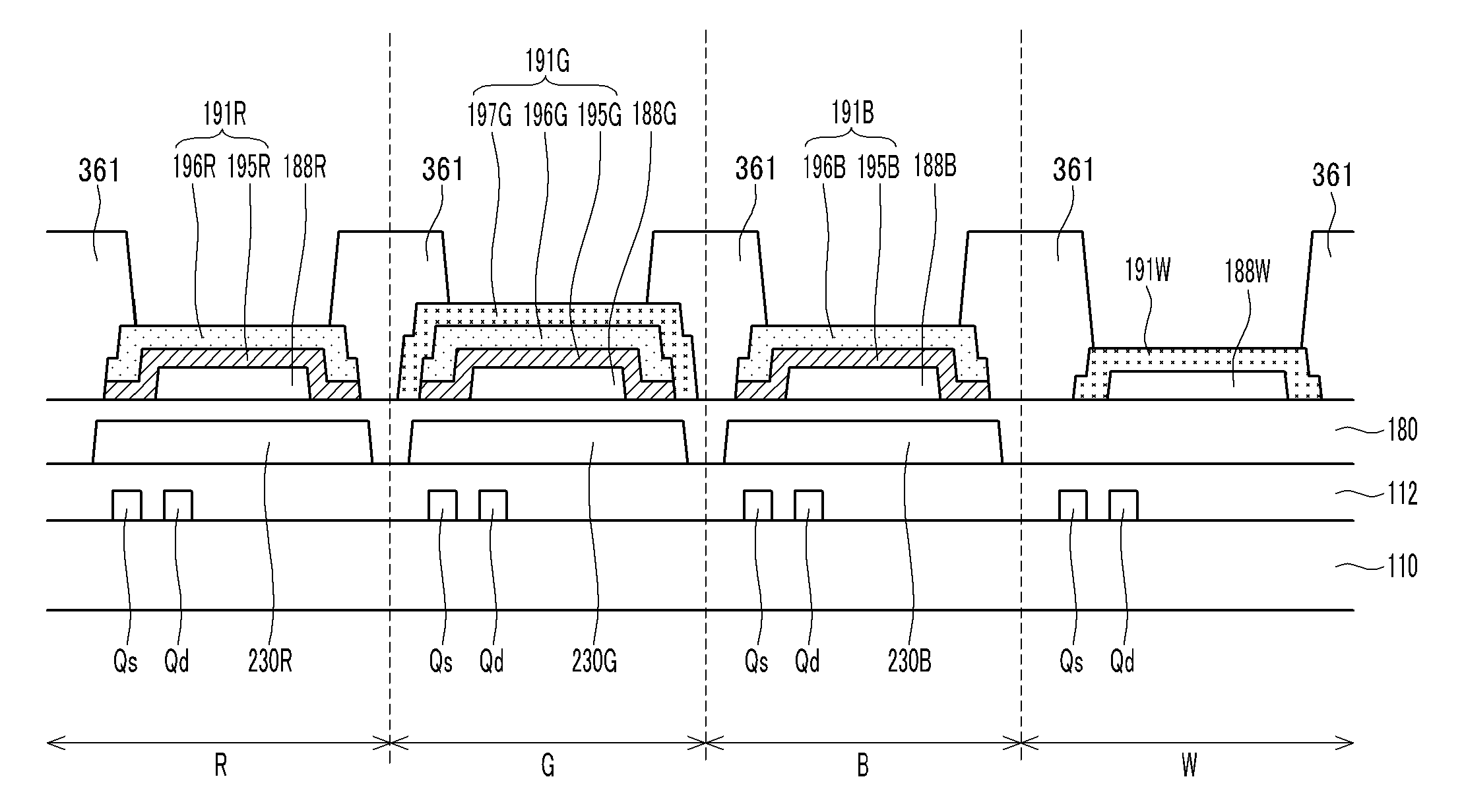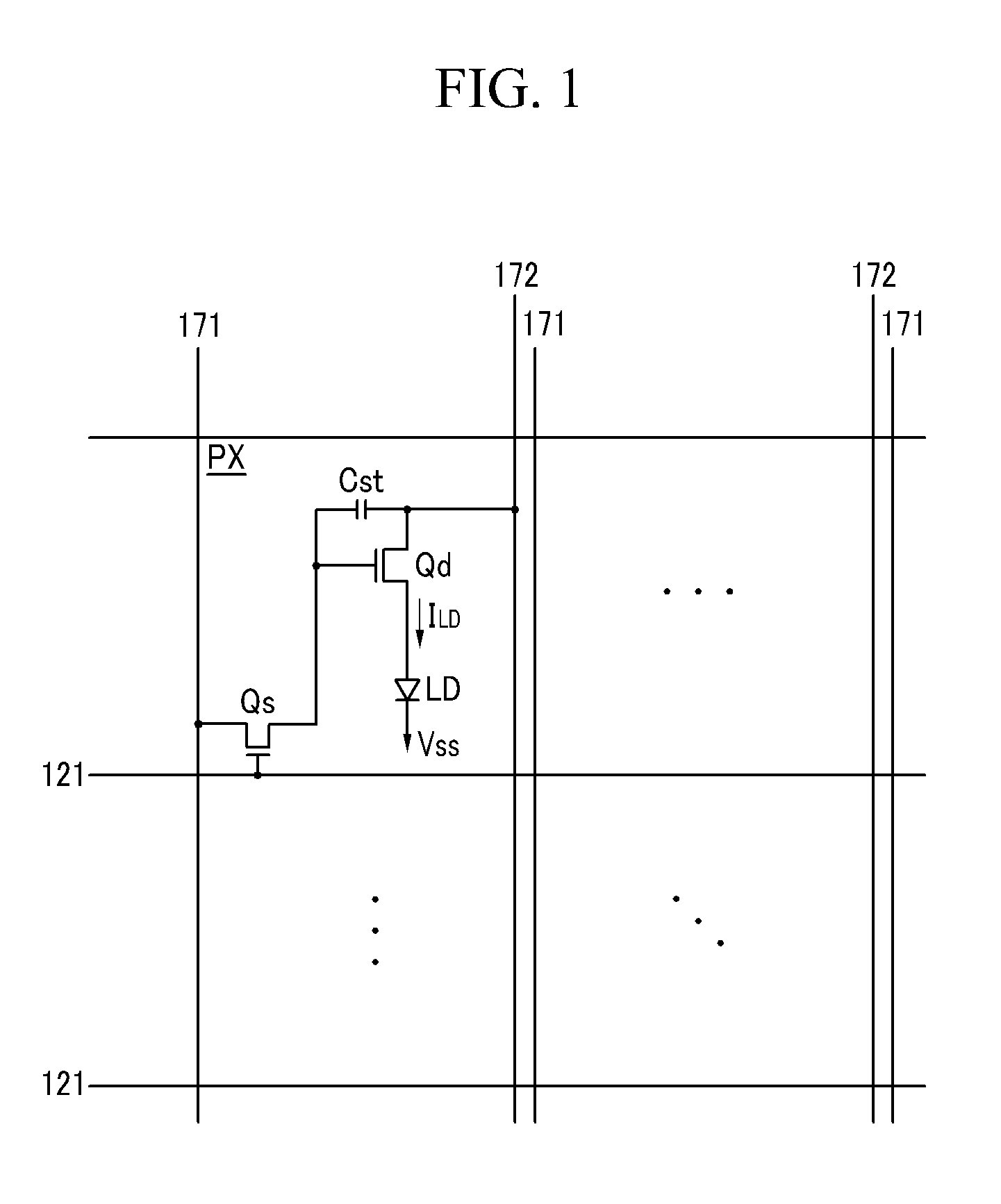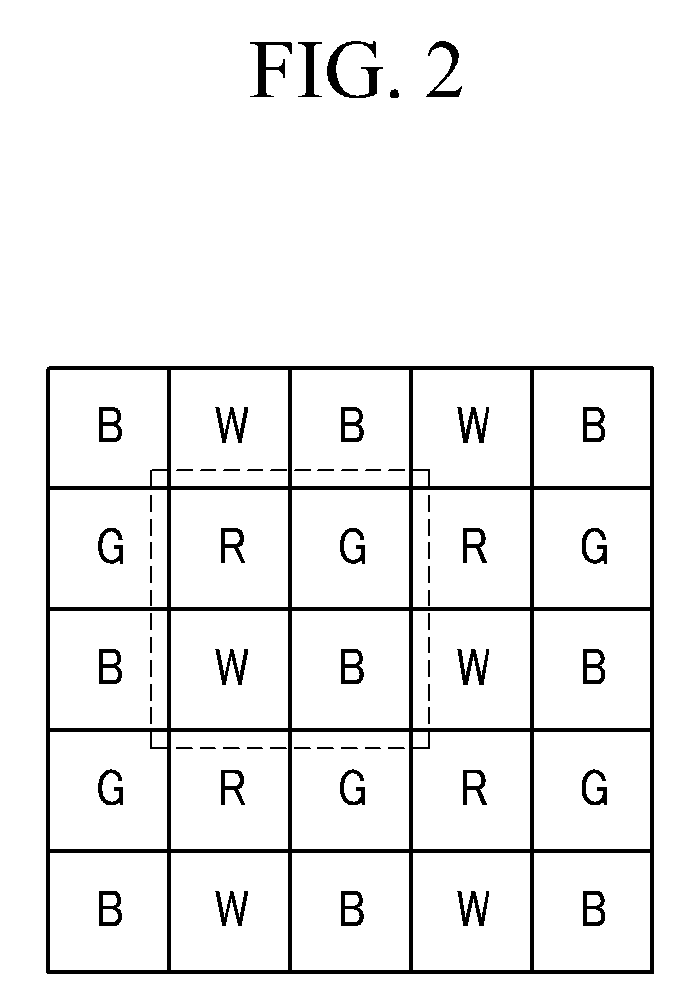Organic light emitting device and method of manufacturing the same
- Summary
- Abstract
- Description
- Claims
- Application Information
AI Technical Summary
Benefits of technology
Problems solved by technology
Method used
Image
Examples
exemplary embodiment 1
[0033]An OLED according to one exemplary embodiment of the present invention will now be described in detail with reference to FIG. 1.
[0034]FIG. 1 is an equivalent circuit diagram of an OLED according to one exemplary embodiment of the present invention.
[0035]Referring to FIG. 1, the OLED includes a plurality of signal lines 121, 171, and 172 and a plurality of pixels PX connected to the signal lines 121, 171, and 172 and arranged in a matrix form.
[0036]The signal lines include a plurality of gate lines 121 that transfer gate signals (or scan signals), a plurality of data lines 171 that transfer data signals, and a plurality of driving voltage lines 172 that transfer driving voltages. The gate lines 121 extend in a row direction and are parallel to each other, and the data lines 171 and the driving voltage lines 172 extend in a column direction and are parallel to each other.
[0037]Each pixel PX includes a switching thin film transistor (TFT) Qs, a driving TFT Qd, a storage capacitor...
exemplary embodiment 2
[0102]The OLED in FIG. 14, according to another exemplary embodiment of the present invention, will now be described with reference to FIG. 1 and FIG. 2.
[0103]FIG. 14 is a cross-sectional view showing the structure of an OLED according to another exemplary embodiment of the present invention.
[0104]A TFT array including switching TFTs Qs and driving TFTs Qd is arranged on the insulation substrate 110 in each pixel.
[0105]The passivation layer 112 is disposed on the TFT arrays, and red filters 230R, green filters 230G, and blue filters 230B are disposed on the passivation layer 112 at the red pixels R, the green pixels G, and the blue pixels B, respectively. Either no color filters or transparent white filters (not shown) may be formed in the white pixels W. The overcoat layer 180 is disposed on the color filters 230R, 230G, and 230B, and on the passivation layer 112.
[0106]The pixel electrodes 191R, 191G, 191B, and 191W are disposed on the overcoat layer 180.
[0107]Also, in this exempla...
exemplary embodiment 3
[0135]A further exemplary embodiment of the present invention will be described in detail with reference to FIG. 22 as well as FIG. 1 and FIG. 2.
[0136]FIG. 22 is a cross-sectional view showing the structure of an OLED according to another exemplary embodiment of the present invention.
[0137]Unlike the above-described exemplary embodiments, in this exemplary embodiment, an auxiliary layer is provided in each pixel to adjust the length of the microcavity.
[0138]A TFT array including a switching TFT Qs and a driving TFT Qd is arranged on the insulation substrate 110 in each pixel.
[0139]The passivation layer 112 is disposed on the TFT arrays, and the red filters 230R, the green filters 230G, and the blue filters 230B are disposed on the passivation layer 112 in the red pixels R, the green pixels G, and the blue pixels B, respectively. Either no color filters or transparent white filters (not shown) may be disposed in the white pixels W. The overcoat layer 180 is disposed on the color filt...
PUM
 Login to View More
Login to View More Abstract
Description
Claims
Application Information
 Login to View More
Login to View More - R&D
- Intellectual Property
- Life Sciences
- Materials
- Tech Scout
- Unparalleled Data Quality
- Higher Quality Content
- 60% Fewer Hallucinations
Browse by: Latest US Patents, China's latest patents, Technical Efficacy Thesaurus, Application Domain, Technology Topic, Popular Technical Reports.
© 2025 PatSnap. All rights reserved.Legal|Privacy policy|Modern Slavery Act Transparency Statement|Sitemap|About US| Contact US: help@patsnap.com



